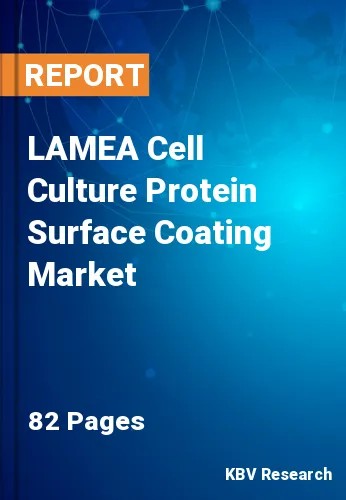The Latin America, Middle East and Africa Cell Culture Protein Surface Coating Market would witness market growth of 18.7% CAGR during the forecast period (2022-2028).
As the necessity for researchers has shifted, the protein surfaces employed for cell growth have improved dramatically. Several groundbreaking investigations have contributed to the development of the culture medium, resulting in a substantial increase in the usage of cell culture. The increasing need for customized therapy and protein therapies, as well as a growing desire for 2D and 3D cell cultures, are other market drivers.
3D cell culture is the technique of cultivating biological cells in a controlled environment where they can interact with neighboring cells in every dimension. For instance, Agilent Technologies provides automated imaging technologies that could give crucial data for enhancing conventional culture techniques and enhancing the repeatability and efficacy of subsequent cell-based experiments.
The increasing focus of a number of researchers, as well as studies, is accelerating the utilization of cell culture protein surface coating in laboratories as well as research institutes in order to explore new applications for cell culture. All of these factors would play a major role in propelling the growth of the cell culture protein surface coating market in the coming years.
In Africa, cancer is a rising public health concern. According to the National Library of Medicine, in 2008, there were approximately 715,000 new cancer cases as well as 542,000 cancer deaths within the region, and these numbers are anticipated to quadruple over the next two decades due to population increase and aging. Stem cell transplant is estimated to become a rising trend within African nations. Due to this, the growth of the cell culture protein surface coating market is anticipated to be expedited in the region in the coming years.
The Brazil market dominated the LAMEA Cell Culture Protein Surface Coating Market by Country in 2021; thereby, achieving a market value of $33.7 million by 2028. The Argentina market is poised to grow at a CAGR of 19.3% during (2022 - 2028). Additionally, The UAE market would exhibit a CAGR of 18.4% during (2022 - 2028).
Based on Type, the market is segmented into Self-coating and Precoating. Based on Precoating Type, the market is segmented into Multiwall/microwell Plates, Petri Dishes, Flasks, Slides and Cover Slips. Based on Protein Source, the market is segmented into Animal-derived, Human-derived, Synthetic and Others. Based on countries, the market is segmented into Brazil, Argentina, UAE, Saudi Arabia, South Africa, Nigeria, and Rest of LAMEA.
Free Valuable Insights: The Global Cell Culture Protein Surface Coating Market is Predict to reach $1.9 Billion by 2028, at a CAGR of 15.5%
The market research report covers the analysis of key stake holders of the market. Key companies profiled in the report include Thermo Fisher Scientific, Corning, Inc., Merck Millipore (Merck Group), Promega Corp., Sartorius Stedim Biotech S.A. (Sartorius AG), Greiner Bio-One International GmbH, PerkinElmer, Inc., BioVision, Inc., Bio-Techne Corporation and Viogene BioTek Corp.
By Type
By Protein Source
By Country
Our team of dedicated experts can provide you with attractive expansion opportunities for your business.

